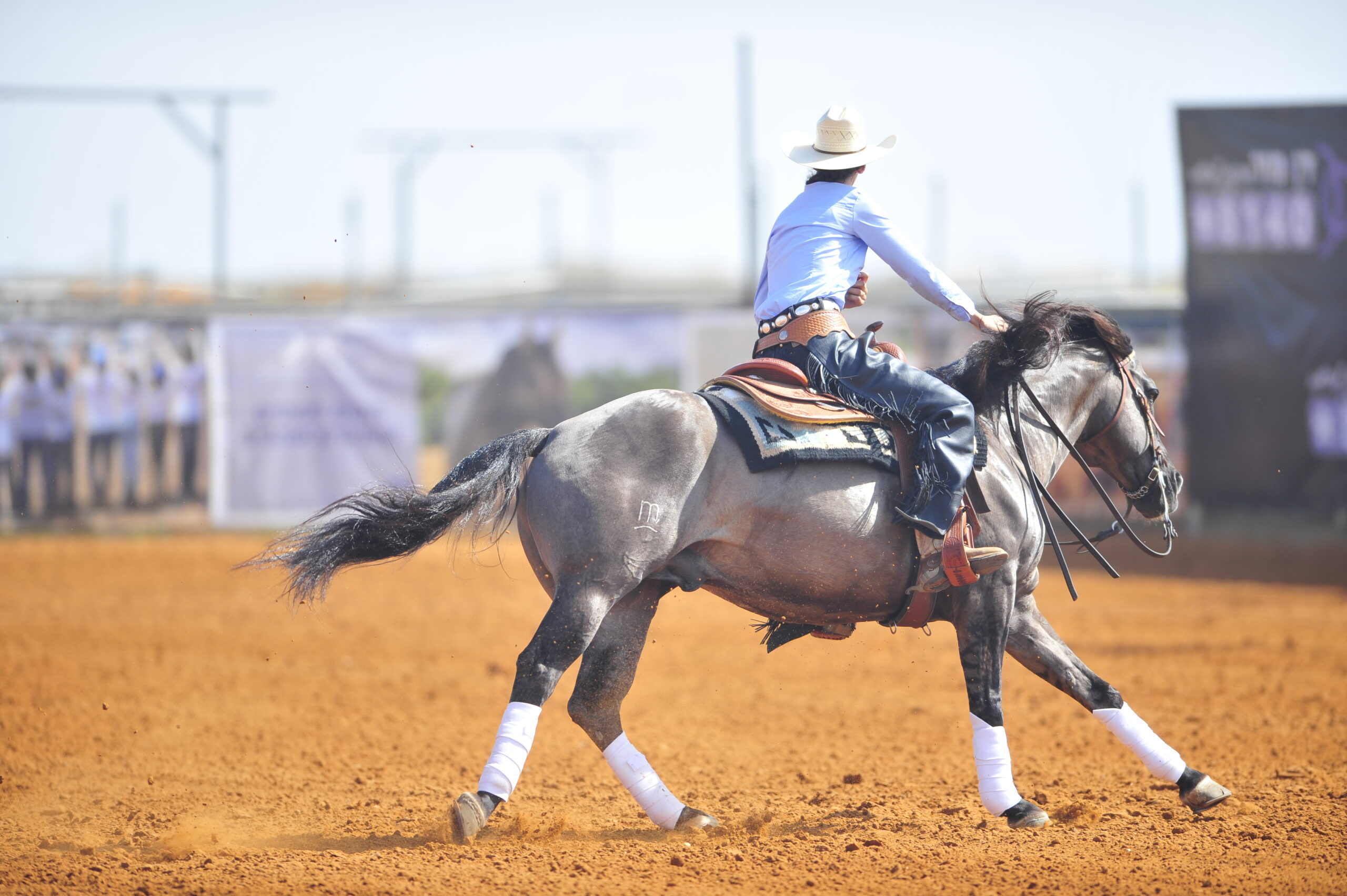
This article is part of our Navigating Equine Arthritis Awareness Campaign, brought to you by American Regent Animal Health.
As horse owners we can put any number of preventative measures in place to protect our horses from injury…but accidents happen. A simple slip and fall can be just as detrimental as a bigger wreck if the circumstances are just right. And when you’re rehabbing your horse from an injury, it’s not a pleasant thought that there could be long lasting effects.

Arthritis-inducing injuries don’t have to spell long-term ailment if you take the proper steps of recovery, management, and prevention. PROMA/adobe.stock.com
When joints are injured, arthritis can become a problem after the fact. Arthritis describes any inflammation in your horse’s joints, ranging from acute, recoverable trauma to the more chronic variety. However, arthritis-inducing injuries don’t have to spell long-term ailment if you take the proper steps of recovery, management, and prevention.
Inflammation is a Problem
To ensure your horse’s mobility, it’s essential for his joints to move freely and without discomfort. A functioning joint is comprised of smooth bones, protective cartilage, and synovial fluid that lubricates the joint. Arthritis develops when any of these elements sustain damage, leading to compromised cartilage or bone.
During movement, friction on the joint surfaces can trigger inflammation, swelling, pain, and restricted motion. If you don’t treat this, the healing process may result in the formation of bone lacking protective cartilage. Which in turn can initiate a cycle of damage, repair, and ongoing inflammation that can progress to chronic arthritis.
[Read: Understanding Equine Arthritis]Three Steps to an Arthritis-Free Recovery
Early Identification
Finding inflammation early on, followed by immediate treatment, reduces the long-term impacts to your horse’s mobility. If you suspect there has been trauma or your horse suddenly has soundness issues, reach out to your veterinarian for diagnosis.
Imaging is typically best to catch soft-tissue injuries or cartilage abnormalities early. If you think you’re late into recovery, radiographs will show any new bone formation as a result of trauma. Particularly in conditions such as osteochondritis (developmental bone disease in young horses) or traumatic injuries, assessing and addressing issues affecting the joint can reduce the chances that arthritis will set in later. Many horses can continue to have athletic careers after arthritis is diagnosed—given the right management strategies and treatments.
Be Smart When Reintroducing Exercise
Following a long layoff, it’s crucial that you bring your horse back to work slowly. After not exercising for an extended period of time, your horse will be out of shape. To prevent re-injury, work on re-building your horse’s stamina and endurance slowly. The goal is to help your horse regain full joint function. Patience and stall rest are most effective to reduce long-term damage.
This means being intentional with his exercise plan as you slowly reintroduce activity. It might be tempting to just jump on when he’s cleared to ride, and take off, but this can cause further injury or arthritis. Under your vet’s advice and care, implement a safe and simple exercise routine to bring him back to work. Hand-walking, ponying, and even swimming are typically gentle ways to resume exercise.
The movement will help keep his muscles limber and increase his circulation—thus promoting healing. Additionally, turnout time will help him get mentally prepared to go back to work. Just as you would if you were cooped up in a small space for an extended period of time, your horse will get bored and a little stir crazy—and is likely to be extremely fresh when you do get back to riding. Just be sure to follow your vet’s orders on returning to exercise!
Practice Patience
Overall, your horse needs your patience when he’s returning from an injury. Especially if you’re trying to prevent arthritis after injury. Patience and stall rest are most effective to reduce long-term damage. It’s important to follow your vet’s instructions carefully. If your vet says 6 weeks of stall rest, then provide your horse with 6 weeks of stall rest. When he’s ready to return to work, introduce a rehabilitation program of gradual, controlled exercise.

Long-term damage from an injury doesn’t have to happen, if you take the proper steps to recovery. By dealing with injuries right away, working closely with your vet on a treatment plan, and being patient while your horse recovers you can help mitigate arthritis.



